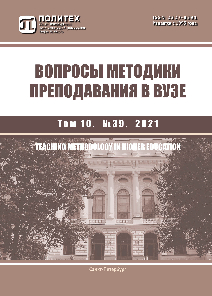Using fishbone diagram in teaching a foreign language grammar (with Russian and English examples)
The article deals with the didactic possibilities of using the fishbone diagram to present grammatical material in foreign language education at non-linguistic universities from the standpoint of a learner-centered approach. The aim of this paper is to present the opportunities of teaching foreign grammar with the example of Russian and English exercises. The authors note that the effective use of the fishbone diagram for presenting or actualization of the grammatical material is possible on the following conditions: 1) a grammatical phenomenon is a representation of a comprehensive paradigm including several categories/meanings/variants; 2) paradigm elements are determined by a specific grammeme /affix; 3) grammatical phenomenon has a certain general meaning or a certain observable regularity. For the successful application of the diagram in teaching foreign grammar a certain organization is necessary. The stages of fishbone preparation for the presentation / actualization of grammatical material include: 1) determination of the problem intended for examination and learning (a specific grammatical phenomenon or its part); 2) isolating the causes that led to the problem (categorization of a grammatical phenomenon features, or those of its part); 3) recognition by example (demonstration of the functioning features in a word, sentence, text); 4) determination of interrelations and interdependence (correlation of features with their functioning in speech, the establishment of logical formation, use, etc.); 5) formulation of a conclusion (grammatical rule or regularity). As a result, the authors conclude that the advantages of using the fishbone diagram in teaching foreign grammar include ensuring the implementation of learner-centered approach; creating conditions for a complex or aspect analysis of a grammatical phenomenon; variability of organizational forms of using the diagram; systematization, volume reduction and visualization of information; improving the skills of analysis, synthesis and generalization, as well as those of critical thinking.



